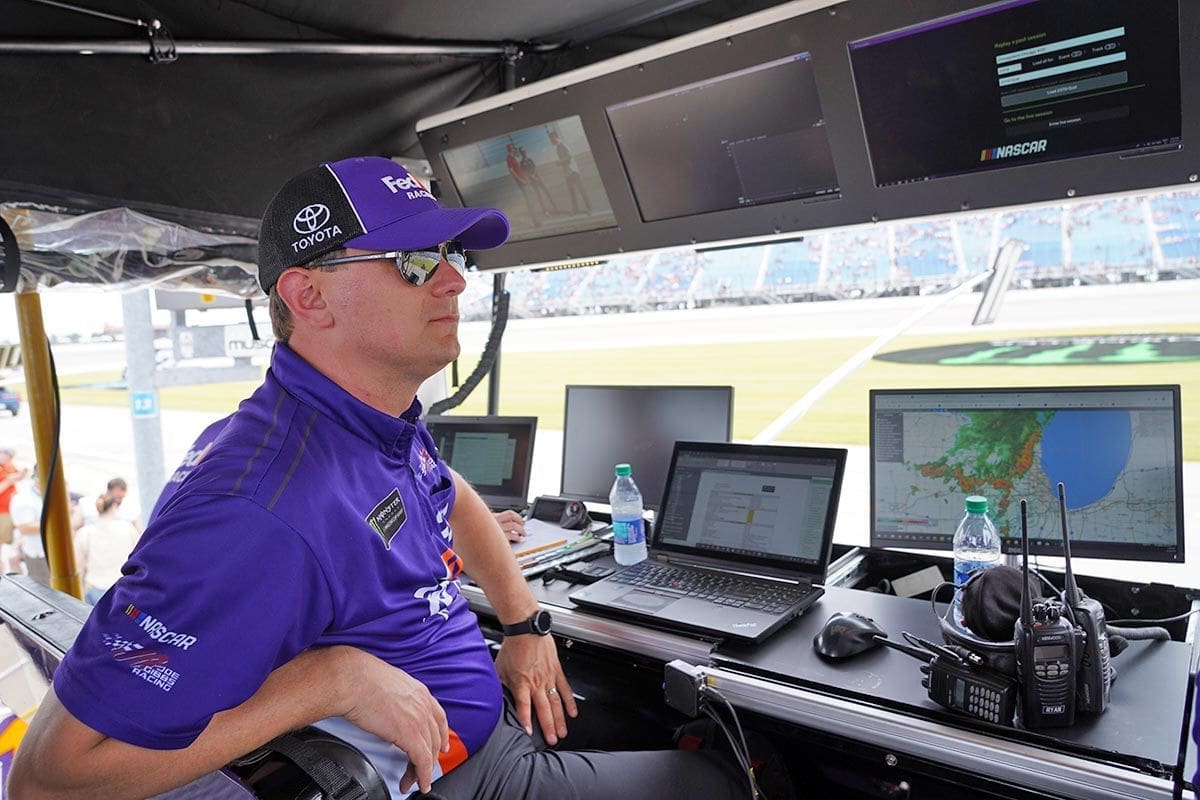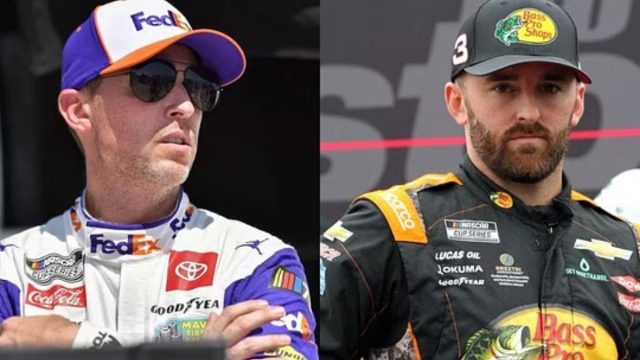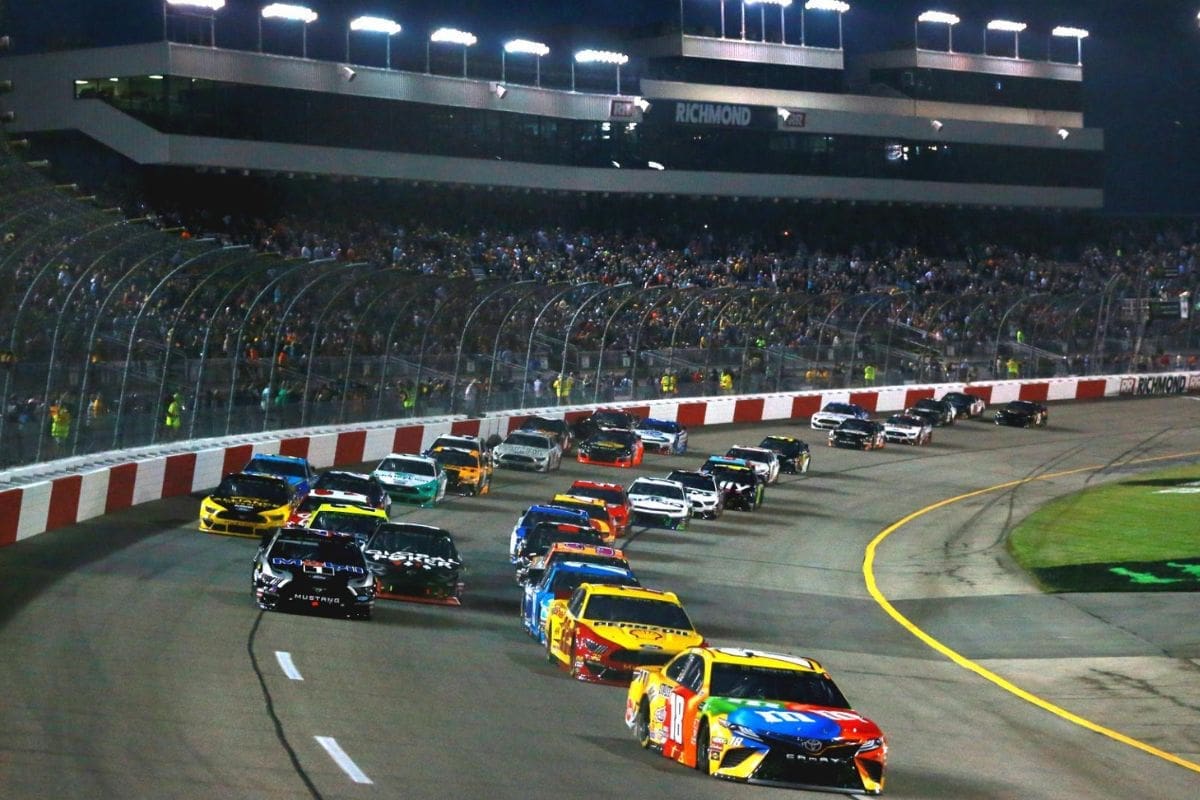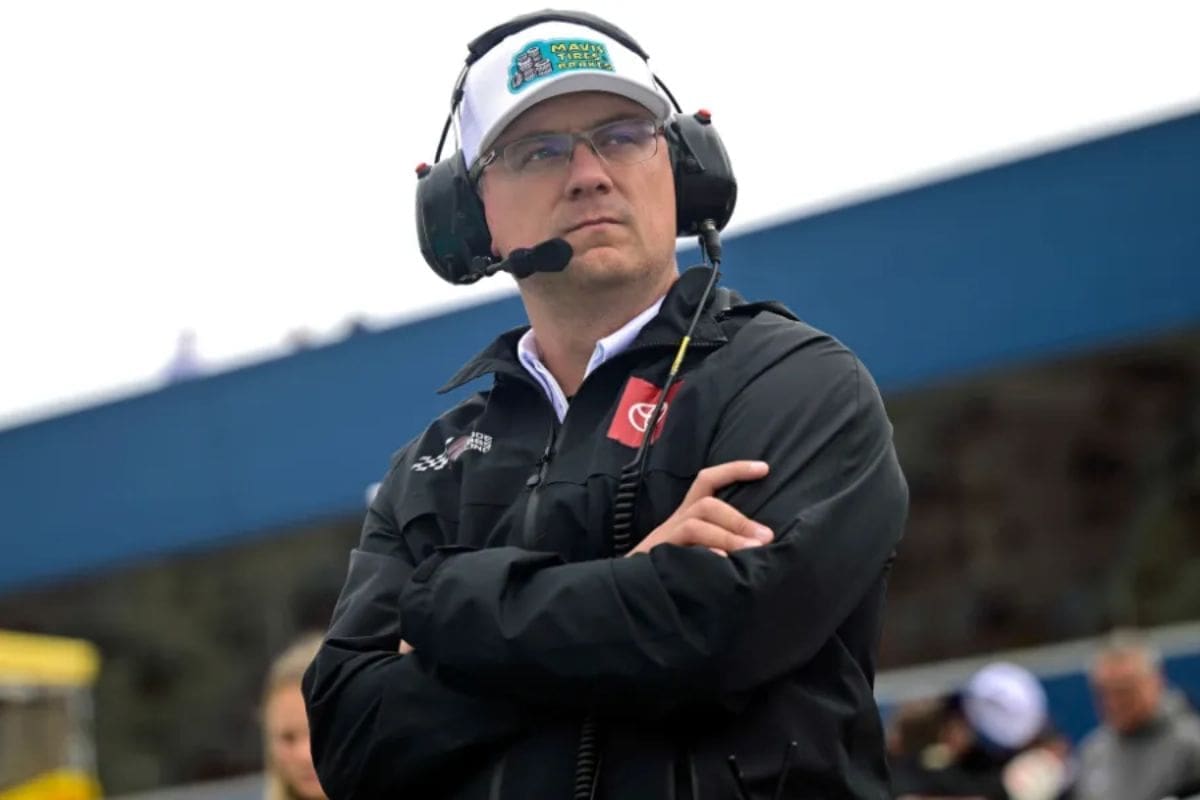Denny Hamlin’s Richmond Crash: The recent insights from Denny Hamlin‘s insider regarding crash during the Richmond incident have sparked a critical conversation about driver safety in NASCAR, drawing unsettling parallels to Kurt Busch‘s tragic accident at Pocono in 2022. This comparison raises questions about the immediate implications for accountability and ethical standards within the sport and emphasizes the broader implications for NASCAR’s regulatory framework. As both incidents unfold in the public eye, one must consider whether the current measures are sufficient to protect drivers or if a reevaluation is urgently needed. What might this mean for the future of the sport?
Key Highlights
- Denny Hamlin’s insider comments highlight the ethical implications of Austin Dillon’s intentional wrecks compared to the nature of Kurt Busch’s crash.
- The G-force impact during Dillon’s crash raised concerns, paralleling the extreme forces experienced by Busch during his incident at Pocono.
- Austin Dillon’s lack of accountability post-race contrasts sharply with Kurt Busch’s sportsmanship following his serious crash.
- NASCAR’s response to Dillon’s actions included the highest penalty recorded, emphasizing the sport’s commitment to safety and integrity.
- Both incidents underscore the need for stricter regulations and proactive decision-making to enhance driver safety and accountability in NASCAR.
Continued Fallout from the Richmond Incident
What are the broader implications of the Richmond incident on the NASCAR community? The aftermath of the Richmond incident continues to reverberate throughout the NASCAR landscape, revealing deeper issues regarding driver conduct and team accountability. The intentional wrecks induced by Austin Dillon have sparked outrage among fans and raised important questions about the ethical standards governing competition within the sport.
Denny Hamlin’s crew chief, Chris Gabehart, found himself at the center of controversy following his alignment with Paul Wolfe’s accusations, which emphasizes the tension that can arise among teams when integrity is called into question.
This incident has the potential to reshape the NASCAR community’s approach to sportsmanship and competition. It highlights the necessity for stricter regulations and clearer guidelines that delineate acceptable behaviors on the track. As teams scrutinize their strategies and interpersonal dynamics, the Richmond episode serves as a cautionary tale about the consequences of prioritizing short-term gains over long-term reputational security.
Moreover, the Richmond incident has catalyzed discussions about the potential for reform in NASCAR’s governance, specifically regarding race manipulation and driver safety. The interaction between Gabehart and Wolfe illustrates the intricate web of relationships and rivalries that define the NASCAR ecosystem, complicating the dialogue around accountability.
Comparison to Kurt Busch’s 2022 Crash
The clear reality of danger in NASCAR is highlighted by the harrowing comparisons between Austin Dillon’s controversial actions at Richmond and Kurt Busch’s catastrophic crash at Pocono in 2022. The incidents draw attention to the precarious nature of high-speed racing, where misjudgments can lead to dire consequences. Busch’s crash, which registered a staggering 30 G’s during the rear impact and 18 G’s at the front, serves as a striking reminder of the forces at play in NASCAR.
While Dillon’s actions at Richmond were intentional, they reflect the unintended outcomes of Busch’s incident. Such reckless actions raise critical questions about driver safety and the integrity of the sport. The NASCAR community has been left questioning whether the Next Gen cars can withstand these extreme forces without compromising driver safety.
Danny Hamlin’s crew chief on @SiriusXMNASCAR says the 11 car hit the wall at Richmond with a 32G spike – the highest g-load ever for a JGR car in the Gen7 era. And higher than the crash that injured Kurt Busch forcing his retirement.
— Chris Weaver (@chris8video) August 15, 2024
The comparison of these two incidents highlights the inherent risks in NASCAR, where split-second decisions can lead to catastrophic outcomes. As the sport moves forward, the lessons learned from both crashes must inform safety protocols and driver conduct. The racing community must prioritize safety to prevent future tragedies, reminding us all that the thrill of competition can quickly turn perilous.
Chris Gabehart’s Account of the Incident
In the aftermath of Austin Dillon‘s controversial actions at Richmond, insights from Chris Gabehart, Denny Hamlin’s crew chief, provide a clear perspective on the incident’s severity. Gabehart highlighted the alarming G-force spike recorded by the No. 11 car during the crash, stating it reached an unprecedented 32G. This figure represents the highest recorded G spike in the history of Gen 7 cars for Joe Gibbs Racing (JGR). Such a force is not merely a numerical value; it encapsulates the intense physical stress that the car—and by extension, the driver—endured at the moment of impact.
Do you know when the highest recorded G spike in the history of Gen 7 was for JGR? It was at Richmond in the #11 car. Sunday night, 32G spike in the wall off of turn 4 coming to the checkered flag.” – Gabehart
Gabehart’s analysis emphasizes the gravity of the situation, contrasting sharply with both Dillon’s post-race actions and the response of drivers in previous incidents. For instance, Kurt Busch, following his own serious crash in July 2022, exhibited exemplary sportsmanship by immediately apologizing and assuring the crowd of his well-being.
Highest ever recorded, I must add higher than the one that unfortunately put Kurt Busch out of, put him in retirement ultimately at Pocono; higher than that. Some flagrant fouls are flagrant. They’re dangerouss,” – Gabehart
In contrast, Dillon’s demeanor after the Richmond race, particularly his lack of acknowledgment towards the fans, raises questions about accountability and sportsmanship in the wake of dangerous incidents.
The significant difference in responses serves to illuminate the broader implications of safety in NASCAR. Gabehart’s account not only emphasizes the risks inherent in the sport but also calls for a deeper reflection on the responsibilities of drivers when faced with the consequences of their actions.
Gabehart on NASCAR’s Penalty Ruling
Analyzing the implications of NASCAR’s recent penalty ruling, Chris Gabehart emphasized the need for accountability regarding Austin Dillon’s actions at Richmond. The incident, which resulted in a severe crash, not only jeopardized Dillon’s safety but also raised significant concerns about the broader ramifications for the sport. Gabehart pointedly remarked that the severity of the penalty, the highest ever recorded for such an incident, reflects the sport’s commitment to enforcing safety protocols and deterring reckless behavior.
Drawing parallels to the tragic circumstances surrounding Kurt Busch’s career, Gabehart highlighted that the dangers inherent in high-speed racing cannot be overstated. He articulated that while no driver intends to create a scandalous disaster, the consequences of negligence can be catastrophic. The implications of Dillon’s actions extend beyond personal accountability; they serve as a profound reminder of the collective responsibility shared by drivers, teams, and NASCAR itself.
Gabehart’s insights reveal a significant turning point for NASCAR, where the enforcement of penalties is not merely punitive but serves as a crucial mechanism for preserving the integrity of the sport. By imposing stringent penalties, NASCAR seeks to foster a culture of safety that prioritizes the well-being of its participants.
Chris Gabehart’s View on Official Decision-Making
Steering through the complexities of official decision-making in NASCAR, Chris Gabehart highlighted the necessity for officials to feel empowered in their roles, particularly in high-stakes situations. The recent incident involving Denny Hamlin emphasizes this urgency, as Gabehart expressed the need for decisive action from officials—a sentiment that resonates deeply within the racing community.
He stated, “The #11 car finished 2 either way, so it’s easier for me to say that they got it right. With the exception of this, I want us to get to a world where the officials feel empowered to make those decisions 60 hours ahead of time, live.” This reflects a desire for a proactive rather than reactive approach to officiating.
As Gabehart pointed out, NASCAR has a system in place for reviewing notable incidents, having tracked 21 such events in the Gen 7 era. This data-driven approach not only serves as a deterrent against foul play but also reinforces the authority of NASCAR in regulating conduct. Ultimately, while self-policing is ideal, the readiness to act decisively during lapses is imperative for maintaining the integrity of the sport.
“Every time you have a significant enough incident that warrants a further look into the incident data recorder, NASCAR will send you the data for that incident. JGRs has had 21 of those incidents in the Gen 7 era.” – Gabehart

News in Brief: Denny Hamlin’s Richmond Crash
In view of the recent analysis by Denny Hamlin, the incidents involving Austin Dillon and Kurt Busch serve as critical case studies in the ongoing discourse surrounding driver safety in NASCAR. The ethical implications of Dillon’s crash and the physical ramifications experienced by Busch highlight the necessity for improved regulatory measures. Such actions are vital not only for protecting competitors but also for preserving the integrity of the sport, prompting a reevaluation of existing safety protocols within NASCAR.
ALSO READ: Denny Hamlin’s NASCAR Ownership Plans: Aiming for Greatness Like Michael Jordan


